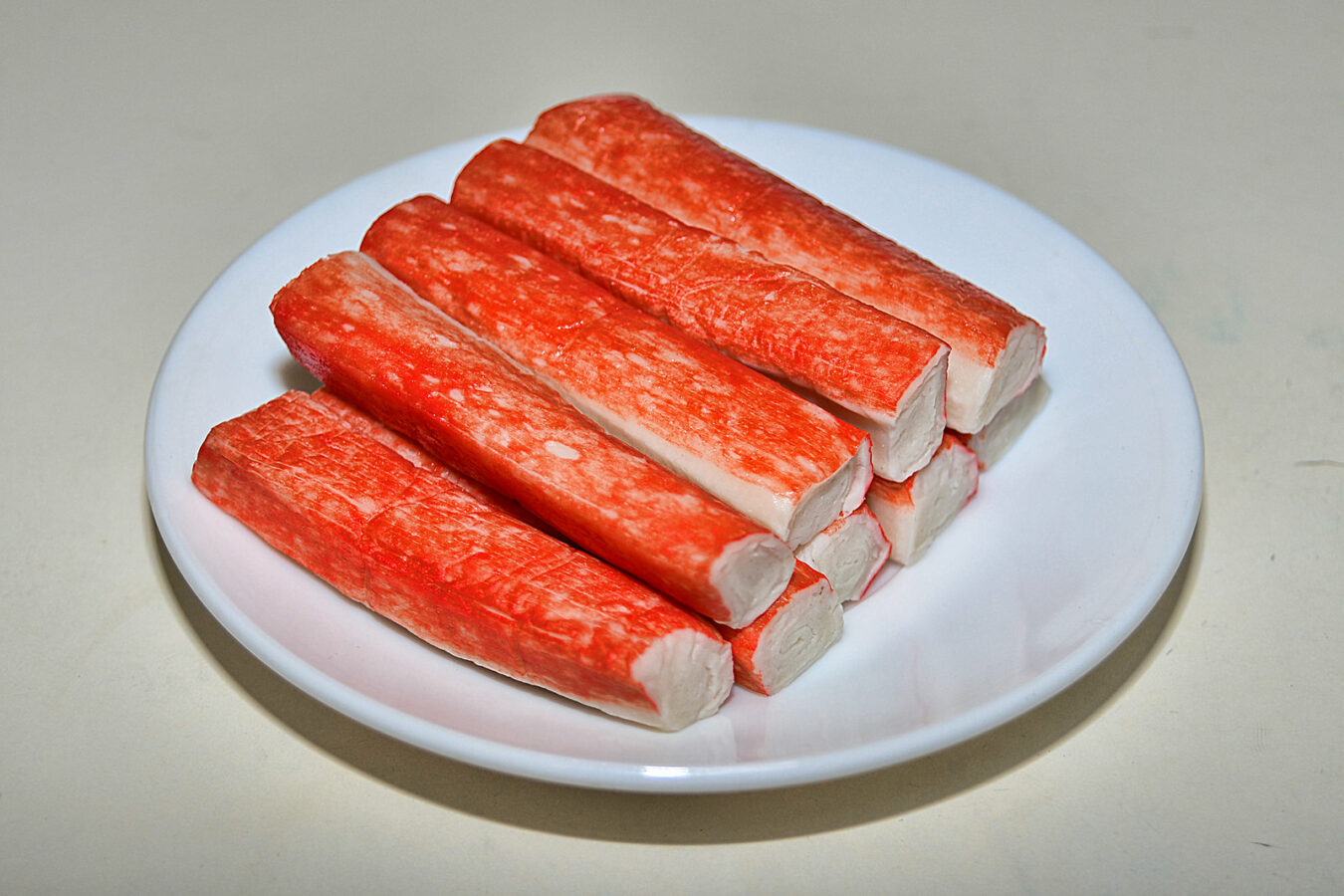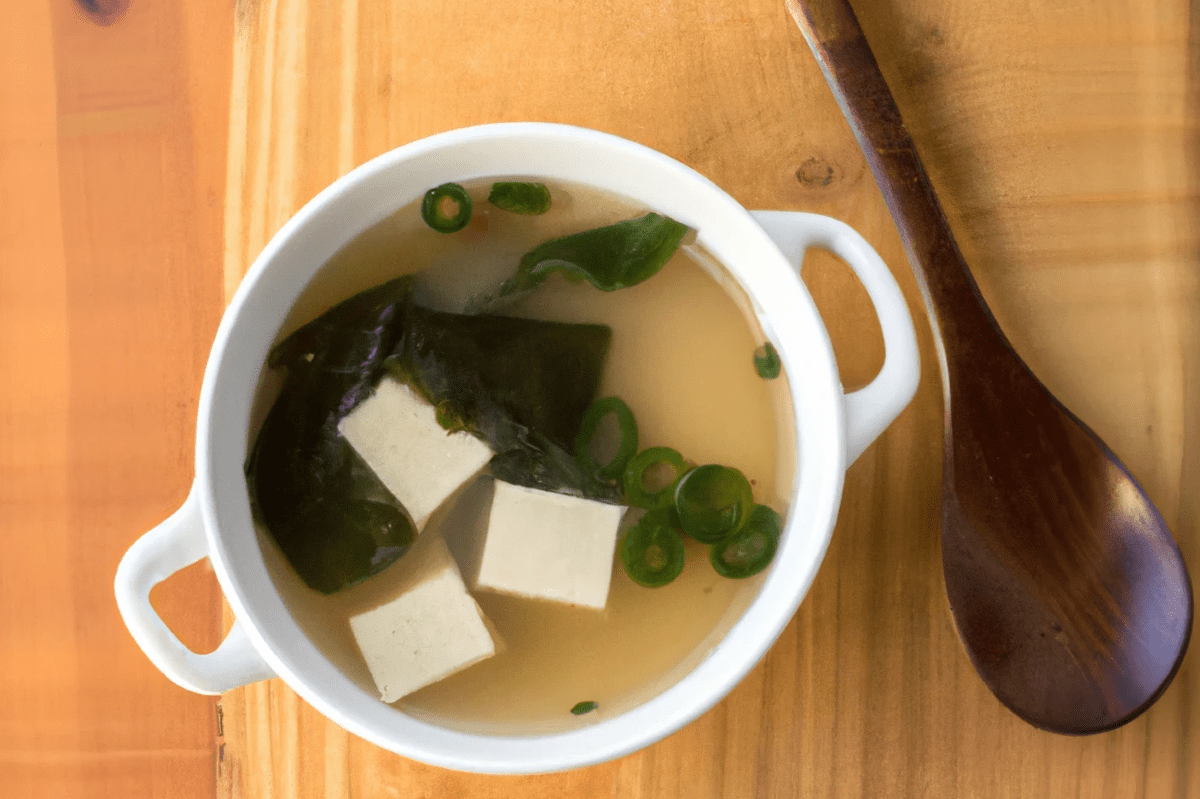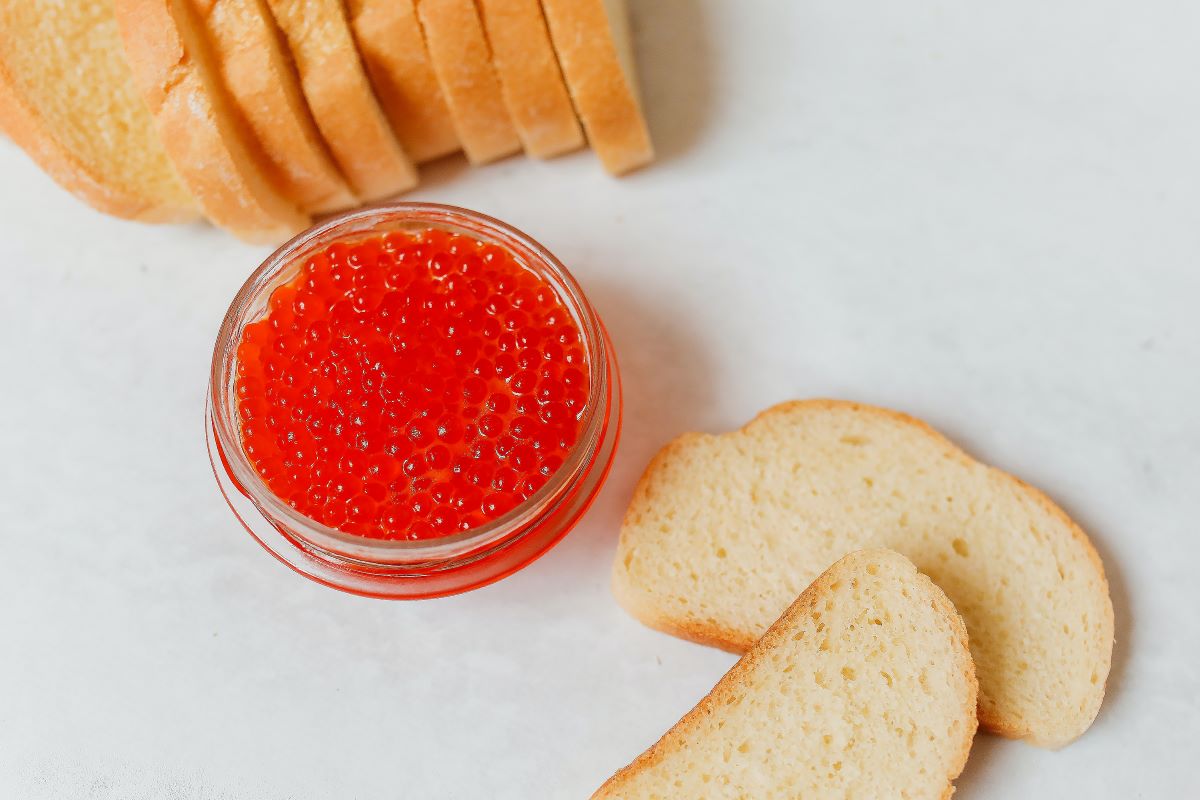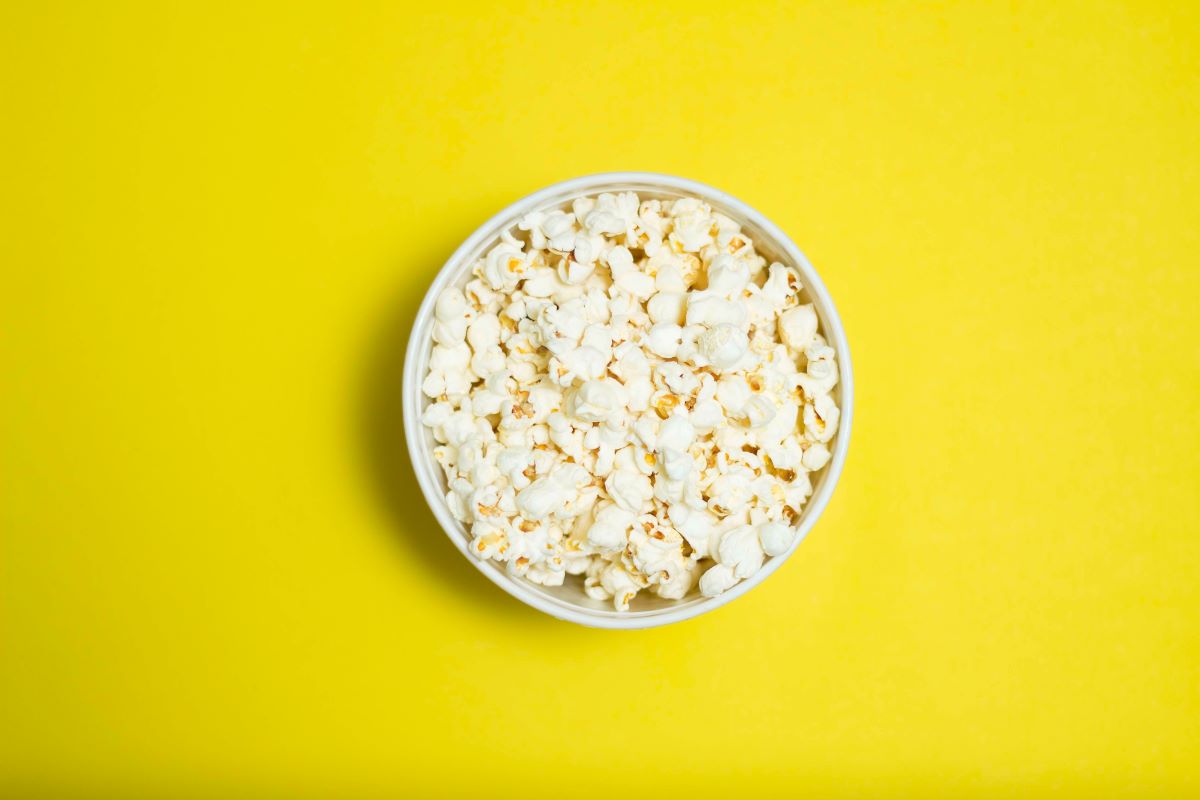Table of Contents
Is Imitation Crab Vegan?
No, imitation crab is not considered vegan because it contains animal-derived ingredients, primarily fish protein, specifically from whitefish species such as pollock.
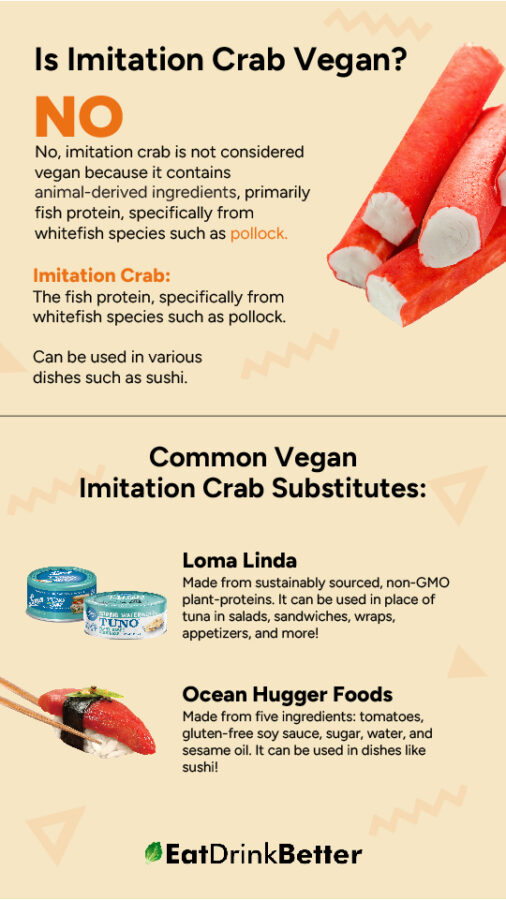
Non-Vegan Ingredients or Processes
Imitation crab’s main ingredient is fish protein, typically from whitefish species like pollock. To create the product, fish are caught, deboned, and minced. Egg whites are added next as a binding agent to achieve the desired texture. Some recipes also include other non-vegan additives like gelatin or casein, which serve as stabilizers.
Controversies or Gray Areas within the Vegan Community
While there are not many controversies or gray areas regarding imitation crab within the vegan community, some concerns may arise from the broader ethical and environmental implications of its production. Being a seafood product, it has potential connections to overfishing and unsustainable practices that could harm the ecosystem.
There are no significant controversies around imitation crab within the vegan community, as most vegans consider it non-vegan due to its fish-based ingredients.
Vegan-Friendly Alternatives and Variations
Vegans can enjoy plant-based alternatives to imitation crab by trying products made from vegetables or soy, or by using ingredients like seasoned jackfruit or marinated tofu.
Store-Bought Alternatives
Popular Brands and Products
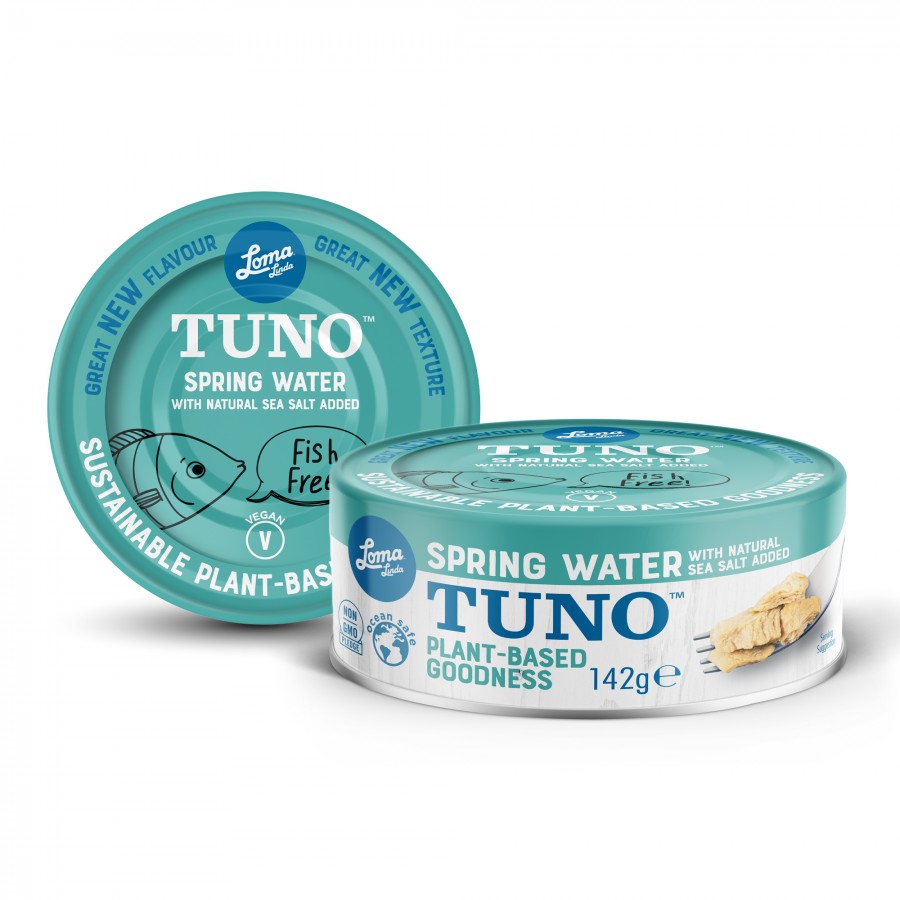
Loma Linda®
Loma Linda’s Fishless Tuna, while not specifically an imitation crab alternative, is suitable for various vegan seafood dishes. Made from textured soy protein, you can use this product in recipes that call for tuna or flaked crab meat.
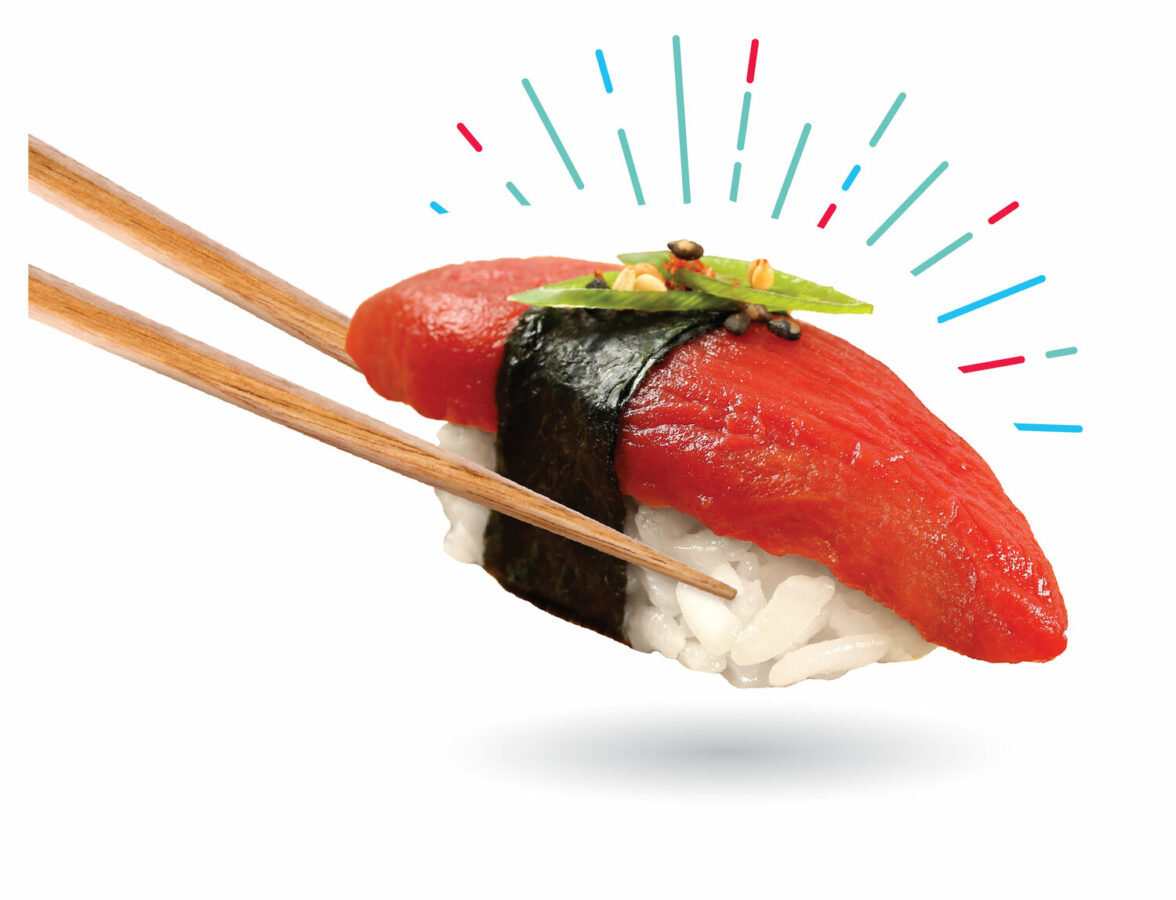
Ocean Hugger Foods®
Ocean Hugger Foods® developed Ahimi, a vegan raw tuna alternative. Ahimi’s texture and umami flavor offer versatility for sushi rolls, poke bowls, or salads. Made from tomatoes and other plant-based ingredients, Ahimi is a popular choice for vegan seafood lovers.
Tips for Identifying Vegan-Friendly Options
When it comes to identifying vegan-friendly options for imitation crab, start by carefully reading the ingredient labels on the packaging. Look for any non-vegan ingredients, like fish, eggs, or milk products. Avoid products that contain seafood flavorings derived from shellfish or fish. Instead, opt for alternatives that use plant-based proteins like soy, wheat, gluten, or pea protein.
Look for products specifically marketed as vegan or plant-based. Research reputable brands known for their vegan offerings, and check for certifications indicating vegan status.
When dining out or purchasing from delis, ask about vegan alternatives or the specific product’s ingredients.
Finally, consider experimenting with homemade options using plant-based ingredients and seasonings. By following these tips, you can easily identify vegan-friendly imitation crab options that align with your dietary preferences.
Homemade Versions
Ingredient Swaps

Jackfruit
This is a versatile fruit that can be used as a substitute for imitation crab. When cooked and shredded, it has a fibrous texture that closely resembles the flakiness of crab meat. You can marinate the jackfruit with spices and seasonings to enhance the taste and achieve a seafood-like flavor.
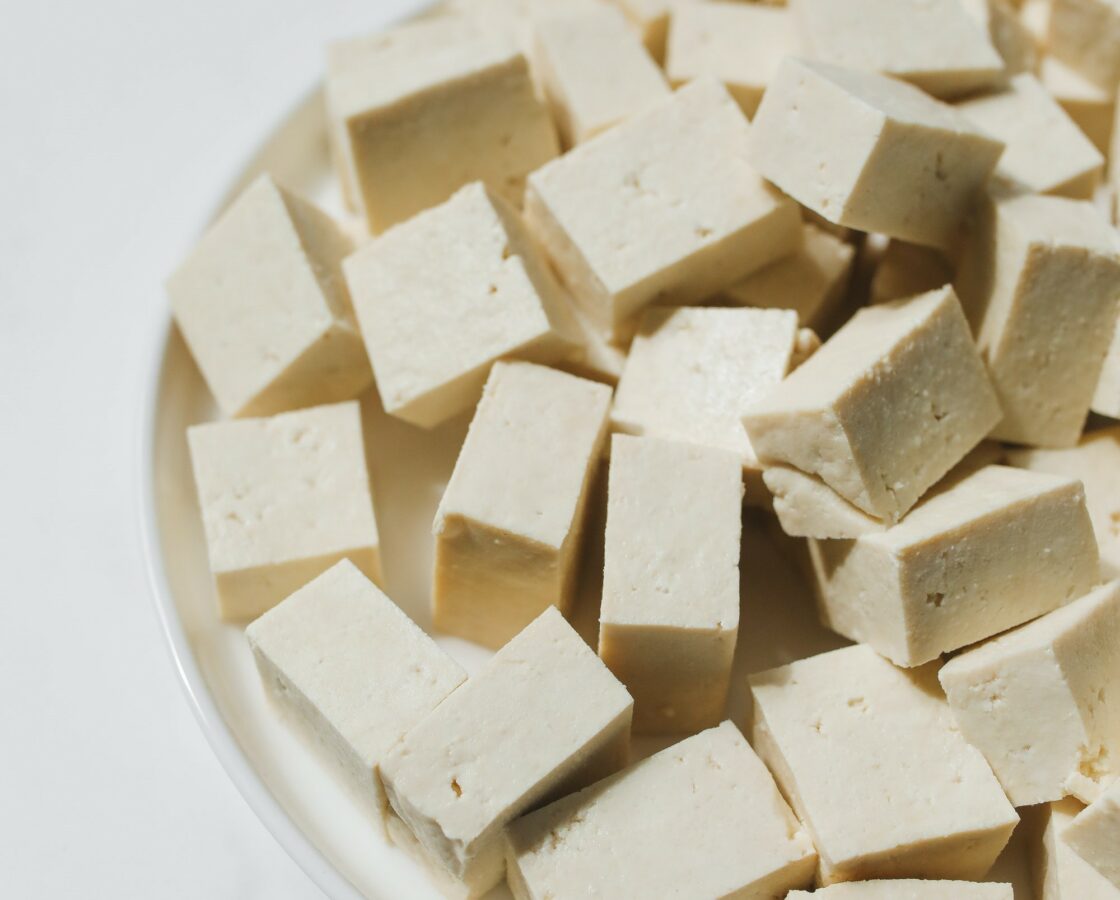
Tofu
Firm or extra-firm tofu can be a great vegan alternative to imitation crab. By pressing and draining the tofu to remove excess moisture, you can achieve a firmer texture. Then you can crumble or dice the tofu and season it with Old Bay seasoning or seaweed flakes, to imitate the taste of crab.
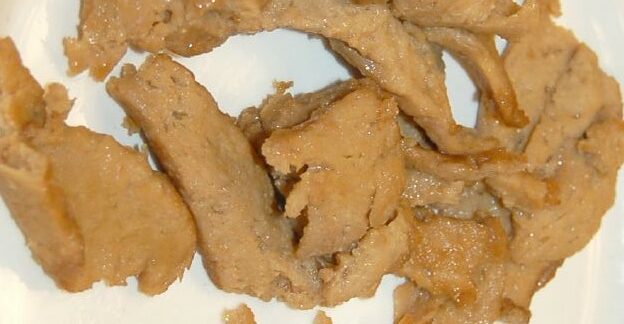
Seitan
Also known as wheat gluten, seitan is a protein-rich meat substitute with a chewy texture. By shaping and seasoning seitan, you can create a vegan alternative to imitation crab.

Hearts of Palm
Hearts of palm is often used as a vegan crab substitute. It offers a tender texture and mild flavor reminiscent of crab meat, making them an excellent plant-based alternative.
When using these vegan substitutes, it’s important to consider the overall flavor profile and seasoning of your dish. Adding ingredients like vegan mayonnaise, lemon juice, nori flakes, or Old Bay seasoning can help create a more authentic crab-like taste. Experiment with different combinations and cooking methods to find the swap that best suits your preferences.
How To Use Vegan Alternatives in Recipes
It’s easy to swap out meat for some vegan inspired alternatives. Enjoy delicious and cruelty-free seafood-inspired dishes by using these vegan alternatives for imitation crab in recipes:
- Jackfruit: For jackfruit, shred and marinate it with spices and seasonings to create a seafood-like flavor.
- Hearts of Palm: Slice or shred hearts of palm for use in salads, pasta dishes, or stir-fries.
- Tofu: Press, crumble, and season tofu to imitate the texture and taste of crab meat.
- Seitan: Shape, season, and cook seitan to make a vegan crab substitute.
Alternatively, choose soy-based products specifically designed to mimic crab. Adjust seasonings and ingredients based on your recipe to create a satisfying and flavorful vegan alternative to imitation crab.
How Imitation Crab Is Made
Imitation crab, also known as surimi or crab stick, is produced through a multi-step process where fish protein is transformed into a seafood product resembling crab in taste and texture. The process begins with deboning the fish, typically from whitefish species like pollock. The fish is then minced and washed thoroughly to produce a fine paste. After, water, starch, sugar, salt, and other ingredients, such as egg whites, for binding, and additives like gelatin or casein, for stabilization, are mixed into the paste to create the desired texture and consistency.
Once the mixture has been prepared, it is then molded into the desired shape, which often resembles flakes or a crab stick. The molded pieces are cooked with flavorings and colorings, giving the final product a taste and appearance similar to crab meat. Finally, the finished product is then cooled, packaged, and distributed to grocery stores and restaurants.
Primary Ingredients
Imitation crab consists of three primary ingredients: fish protein, water, and starch. The fish protein is usually derived from whitefish species, such as pollock, which are caught, minced, and deboned and created into a fine paste. Water is then added to the paste to achieve the desired consistency. Starch, often derived from sources such as corn, potatoes, or wheat, is included to act as a binder, but also to provide a certain texture that gives the imitation crab its structure.
Secondary Ingredients and Additives
Apart from imitation crab’s primary ingredients, there are several other secondary ingredients and additives used to enhance the product’s taste, texture, and stability. For flavor, manufacturers often add sugar and salt, balancing sweet and savory notes. To achieve an appealing texture, they frequently use egg whites as a binding agent, enabling the ingredients to hold together and form a firm yet tender consistency.
Additional additives may also include flavorings and colorings that mimic crab meat’s taste and appearance. These can come from natural sources, such as crab or lobster extract, or artificial flavors resembling seafood. Colorings, in the form of either natural or artificial food dyes, are added to provide the imitation crab with a red or orange hue.
Some imitation crab recipes might include additional additives, such as gelatin or casein, for stabilization purposes. Derived from animal sources, these substances help maintain the product’s structure and extend its shelf life. While not found in all imitation crab products, their presence can make the product unsuitable for those following a vegetarian or vegan diet.
Sourcing and Ethical Considerations
Environmental Impact
The environmental impact of imitation crab production has multiple aspects and results from various stages of the production process. First, the primary component of imitation crab, surimi, comes from white-fleshed fish like pollock, hake, or whiting. These fish are often harvested from overfished or vulnerable fish stocks, which can lead to the depletion or collapse of these stocks, disrupting marine ecosystems and affecting the food chain.
Second, transforming fish into surimi requires substantial energy and water resources, potentially contributing to greenhouse gas emissions and increased water usage. Moreover, if not adequately treated, the wastewater produced during the surimi washing process may disrupt local water systems, adding stress to the environment.
Overall, imitation crab’s environmental impact can be significant; however, improvements can be made at every stage of production. Adopting sustainable fisheries management and minimizing water usage and pollution, can collectively help mitigate the negative environmental aspects associated with imitation crab production.
Ethical Considerations
The production and sourcing of imitation crab meat raise significant ethical concerns regarding animal welfare. While imitation crab meat is not derived directly from crab, it often contains meat from a variety of fish species like pollock and white fish. The harvesting process of these fish can involve inhumane fishing practices.
Labor Practices
Crews working onboard fishing vessels in the imitation crab industry often perform tasks such as sorting, gutting, and storing the catch. These crews usually consist of both local and migrant workers. Challenging working conditions may impact their physical and mental health, as they work long hours in extreme weather and are constantly exposed to seawater.
Despite the industry’s challenges, companies have made significant efforts to ensure workers’ ethical treatment and safety throughout the imitation crab supply chain. Some companies now follow codes of conduct and social responsibility guidelines aligned with international labor standards. These guidelines address critical concerns like fair wages, safe working conditions, and proper employee benefits. Moreover, certification schemes and third-party audits of labor practices are becoming more prevalent in the industry to ensure compliance and transparency.
Frequently Asked Questions
Can I eat imitation crab raw?
Yes, you can. Imitation crab is actually cooked during the manufacturing process, so it’s safe to eat straight out of the package for cold dishes, such as dips and salads. Alternatively, you can also add it to dishes you heat.
Are there allergens in imitation crab?
Yes. Imitation crab contains fish protein and often egg whites, posing a risk for those with fish or egg allergies. Some brands may also include wheat, soy, or other allergenic ingredients, so it’s essential to read the product label carefully.
Can I use vegan alternatives in my favorite crab recipes?
Yes, you can use vegan alternatives in your favorite crab recipes. Properly seasoning and preparing ingredients like jackfruit, hearts of palm, tofu, or plant-based seafood substitutes can effectively replace crab meat, offering a delicious and vegan-friendly option.
